Turning your website or blog into a steady source of income is entirely possible with the right management. It's all about complementing your content with ads that resonate with your audience.
Imagine earning thousands of dollars passively, just by showcasing ads that catch the eye of your target audience at just the perfect moment. Sounds great, doesn't it?
But the question is, how do you dip your toes into the world of digital publishing? And once you're there, how do you go about selling that precious ad space on your site?
We're diving into the world of online advertising in this piece, exploring the top three strategies for selling ad space effectively.
First things first, let's lay down some groundwork. Before you even think about selling ad space, it's crucial to ensure you've got all your ducks in a row and meet the criteria for becoming a digital publisher. Let's get started.

What is ad space?
Ad space represents a world of opportunities for businesses to showcase their offerings, whether on popular websites or in favorite magazines. It's like renting a spot in the digital or physical realm to highlight what you have to offer. This visibility is crucial for promoting products or services and comes in various forms, from flashy website banners to sleek magazine ads. The placement of your ad, akin to securing a spot in Times Square, can significantly impact its visibility and cost. Ultimately, it's all about connecting with your audience and making an impression.
Basic requirements for web publishers
Your site must have a sufficient amount of traffic
Your site or blog must be active for at least six months and generate a sufficient amount of traffic. To apply for Google AdSense, publishers must attract around 250 unique visitors per day to complete the necessary conversions.
Most of the website's traffic must come from the United States, the United Kingdom, Canada, Australia, and Europe. Invalid click activity, usage of malicious malware, and generation of fake impressions are strictly prohibited.
Care about the quality of your content
The digital content must be original, relevant, and useful for users; this way selling ad space will be easier. Advertisers prefer theme-based, niche content highlighting specific topics such as travel, lifestyle, sports, cars, etc.
The website must offer rich content and have a reasonable amount of pages (at least 20 to 30 pages, articles, or blog posts) for ad space.
Please note, any websites containing content that falls under banned categories. These categories include, but are not limited to, pornography, hate speech, explicit violence in blog posts, as well as promotion of weapons and ammunition, illegal drugs, alcohol and tobacco, gambling and online casinos, and also spyware, malware, or hacking software.
Optimize your website design
Think about the design and navigability of your website. Your platform must be professionally designed and visually attractive to end users. It must be easily navigated, simply structured, and provide a flawless user experience.
If you want to fill your web page with ad spaces, you need selling ad space, so load time and latency are important parameters. Make sure your web page is mobile and tablet-compatible.
Make sure that the information on your website is sufficiently transparent
Ensure the information on your platform is transparent and readily accessible to everyone. It's important that visitors can easily locate how to contact you and get in touch as necessary. If your website is already enjoying good traffic, has a loyal audience, and sees strong conversion rates, then it might be the perfect time to start exploring different ways to monetize through selling ad space.
Now, let’s finally talk about how to sell ads on your website.
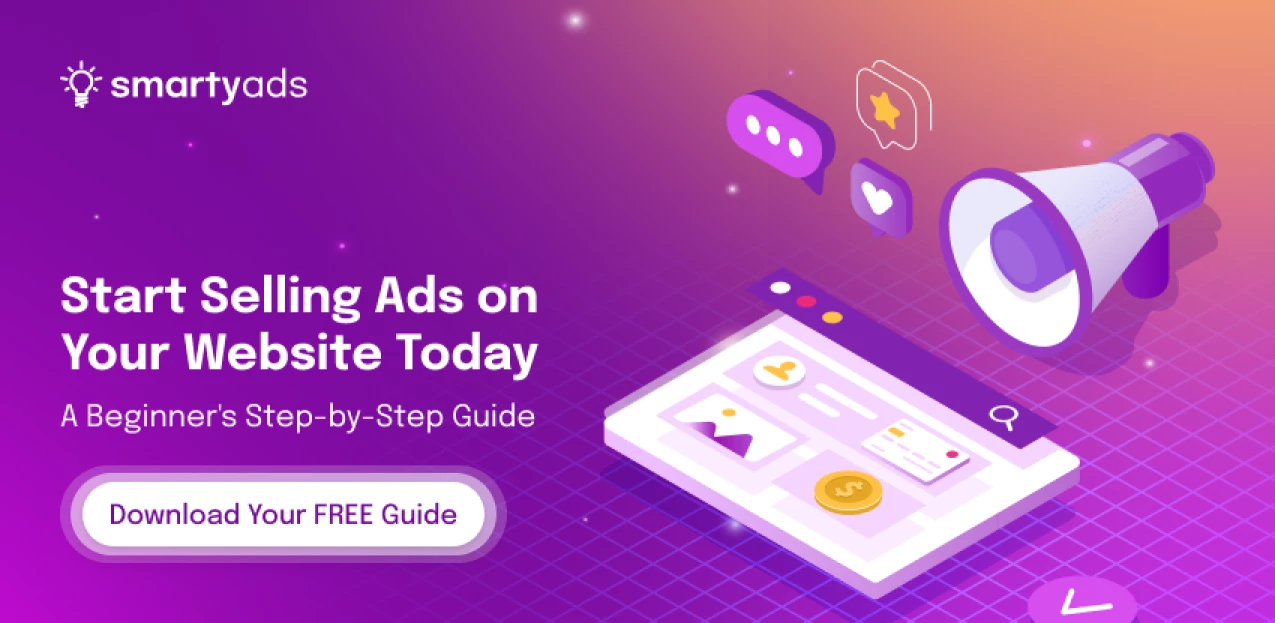
3 Best ways how to sell ad space on your website
Affiliate Marketing
The fastest and possibly easiest way to start earning money with your website is to become an affiliate publisher by joining an affiliate program.
Affiliate marketing or affiliate advertising on website is when a publisher, blog owner, or business entity agrees to promote a product or service in exchange for a commission.
In affiliate marketing, the affiliate acts as a middleman, connecting potential customers with the merchant's offerings. The affiliate earns a commission for every sale, lead, or desired action generated through their promotional efforts. This commission is typically a percentage of the sale or a fixed amount agreed upon between the affiliate and the merchant.
Usually, website owners place affiliate links, banners, and text ads and convert their organic traffic into referrals for media buyers.
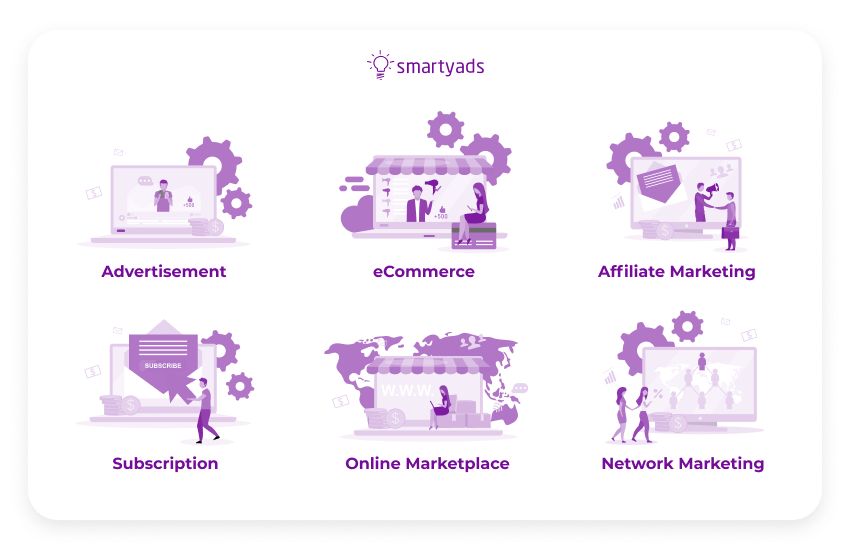
The minimum requirements for publishers to join affiliate programs include:
The minimum requirements for publishers to join affiliate programs include:
- an individual domain name;
- at least one email account linked to that domain;
- a website layout that supports ads of various formats.
Also, you should have a responsible person who monitors emails and ads and can customize the website if necessary. Almost anyone who owns a website can become an affiliate publisher.
To get started in affiliate marketing, it's all about joining the right circles. Think of platforms like Clickbank, Amazon Associates, eBay, or Commission Junction. These aren't your average ad networks; they're affiliate networks, which means they're the go-betweens for publishers like you and the advertisers whose products you'll be promoting.
They're packed with a variety of affiliate marketing programs to choose from. Typically, these networks will ask advertisers for a setup and license fee to get things rolling. But the good news for publishers? Joining is usually free, so you can dive into the affiliate marketing world without upfront costs.
Affiliate marketing strategies
When diving into the world of affiliate marketing, it's important to recognize that it's not just about slapping affiliate links everywhere and calling it a day. There's a real art to strategically promoting a retailer's products in a way that resonates with your audience. For starters, consider writing an in-depth review of a product, or if you're looking at items that are similar, why not put together a comparison or ranking to help your followers make an informed decision?
If you've already built a strong relationship with your audience and they trust your judgment, you have a unique opportunity to bring products to life for them. This could be as simple as demonstrating how a product works, trying on a series of outfits, giving a firsthand account of your experience with a new aftershave, or even taking a new car out for a spin.
What's great about affiliate marketing is that it's a performance-based gig. This means your earnings are directly tied to the results you generate, whether that's through clicks, leads, or actual sales. It's all about creating genuine, engaging content that convinces your followers to take the leap and check out the products you recommend.
Pros of using affiliate marketing to sell ad space:
- Passive Income: Earn from affiliate sales without selling advertising space.
- Performance-Based: Pay for actual conversions, ensuring a high return.
- Diversified Revenue: Add a new stream, reducing dependency on traditional ad sales.
- Targeted Advertising: Expect higher conversion rates and relevant ads.
- Flexibility: Choose partnerships aligned with your audience and content.
Cons of using affiliate marketing to sell ad space:
- Revenue Share: Publishers share sales revenue with affiliates, reducing profit margins.
- Limited Control: Publishers have less control over affiliate ad content and placement, affecting user experience.
- Dependence on Affiliate Programs: Publishers rely on the performance and reliability of affiliate programs, which may change or end.
- Competitive Market: The saturated affiliate marketing space makes it challenging for publishers to stand out and attract affiliates.
- Compliance Challenges: Adhering to affiliate program guidelines and regulations adds complexity to operations and content management.
Programmatic advertising
One of the best ways to get ads for website and sell ad space is through display advertising. Whether you are a blogger who has just started gaining an audience or a respectable publisher, programmatic advertising has something to offer. The secret lies in the automation of the buying and selling ads processes, making it an efficient method to get ads for your website.
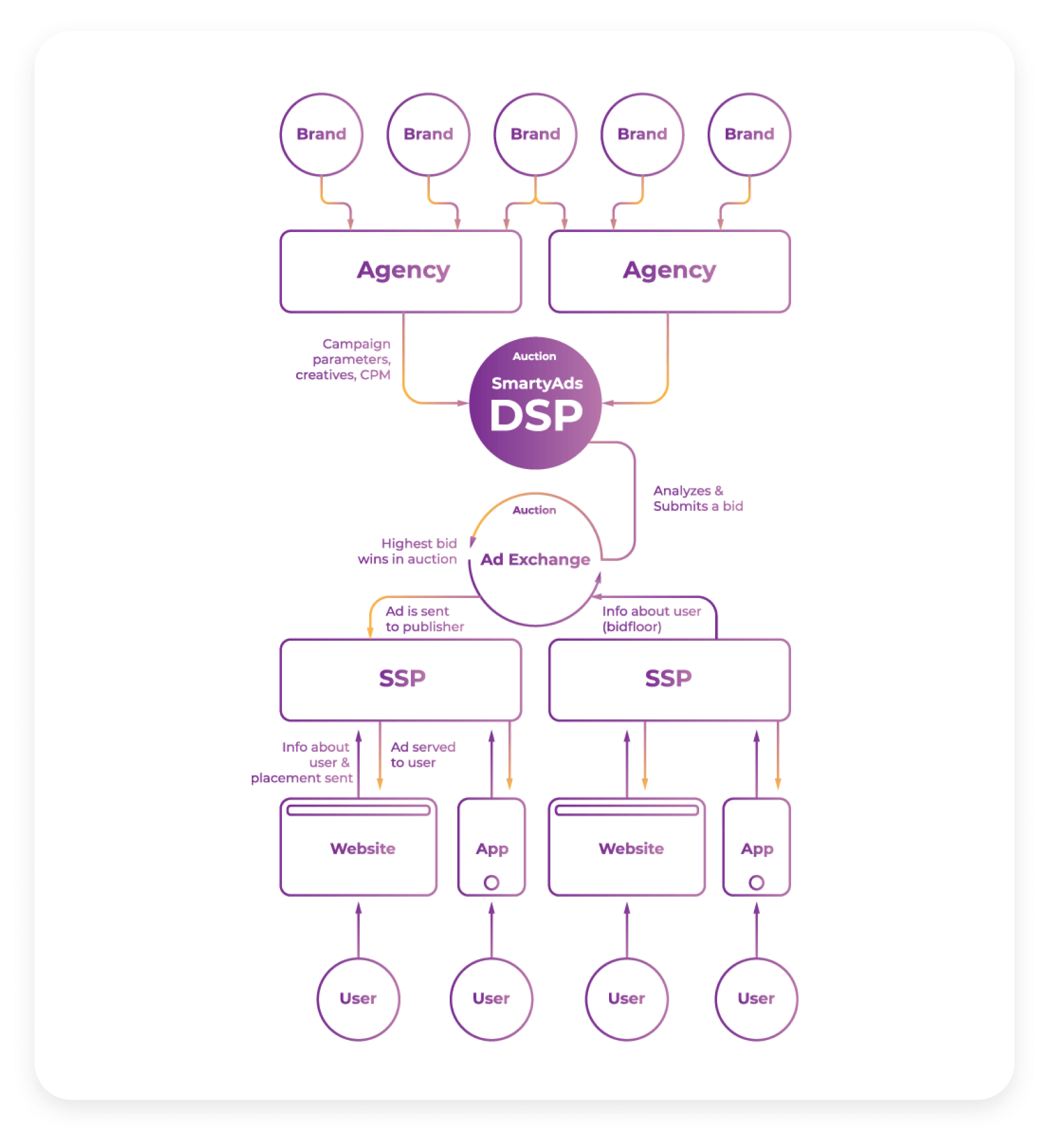
No need to look for media buyers or wait for a suitable affiliate program; display ads will match appropriate ads with relevant audiences. Read more information about what is programmatic advertising technology.
How to sell advertising space using automated advertising?
You have to register as a publisher on a supply-side platform (read about what is a supply-side platform). Then, you have limitless opportunities to sell your ad space online.
Publishers may choose to sell ad space through open real-time bidding auctions (read more information about the importance of RTB), engage in private marketplace direct deals, establish one-to-one relationships with buyers via preferred deals, or enjoy the capabilities of programmatic direct.
Programmatic advertising enables publishers to optimize selling advertising, streamline operations, maximize revenue, and receive powerful insights from real-time statistics that allow better customization of the ad space in the future.

What opportunities do you get while selling ads programmatically?
Due to opportunities presented by display advertising, publishers finally use data and technology to boost sales. You will be able to understand your audience better, and machine-learning algorithms will deliver highly targeted ads that perfectly fit your audience's interests.
With programmatic buying (read about things you need to know about programmatic buying), publishers are instantly connected to the demand sources locally and worldwide.
Ad networks provide access to a large number of advertisers. Plus, publishers understand better the value of their ad space and inventory when putting it into a highly competitive bidding environment.
How does it work?
An ad network is a platform designed to facilitate the process of how to sell advertising space by connecting advertisers and publishers (website owners or app developers). These networks act as intermediaries, assisting advertisers in reaching their target audience by strategically placing ads on various publisher websites or apps, effectively streamlining the buying and selling of online advertising space.
The primary purpose of an ad network is to match the right ads with the right publishers based on various factors such as target audience, website content, user demographics, and geographic location. Ad networks offer a range of ad formats, including display ads, video ads, native ads, and more. They can accumulate desktop or mobile inventory.
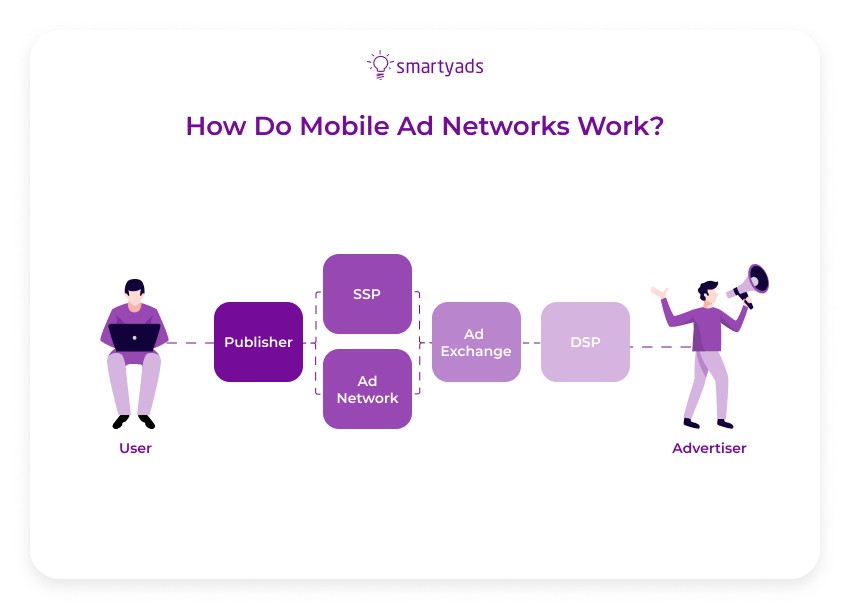
There are several famous and widely used ad networks in the digital advertising industry. You've probably heard of or even used Google AdSense, which is also an ad network.
However, in addition to ad networks, programmatic also relies on ad servers and ad exchanges. An ad server is a technology platform that manages the delivery and tracking of ads. An ad network connects advertisers with publishers to facilitate ad buying and selling.
The ad server integrates with the ad network to fetch and deliver ads to websites or apps based on targeting criteria. The ad server collects data and provides reporting tools for performance monitoring and optimization. Together, they enable publishers to monetize their inventory and help advertisers reach their target audience.
An ad exchange, in turn, is a digital marketplace where advertisers and publishers come together to buy and sell ad inventory in real time through automated auctions.
It is a platform that brings together various ad networks, demand-side platforms (DSPs), and supply-side platforms (SSPs) to facilitate programmatic buying and selling of ad space online.
For publishers, ad exchanges help them place their advertising inventory. This inventory includes free ad space on their websites, apps, or other digital properties.
Pros of using programmatic advertising to sell ad space on website:
- Streamlined Selling: Programmatic advertising simplifies ad sales, saving time and resources for publishers.
- Dynamic Optimization: Publishers can adjust ad placements and pricing in real time based on audience data for maximizing revenue.
- Broad Ad Access: Programmatic platforms provide access to diverse advertisers and networks, increasing revenue potential.
- Precise Targeting: Programmatic technology enables precise audience targeting, resulting in higher engagement and better ad performance.
- Clear Analytics: Publishers gain detailed analytics and reporting, allowing them to track ad performance and optimize strategies.
Cons of using programmatic advertising to sell ad space on website:
- Price Volatility: Automated bidding can lead to fluctuating ad prices, making revenue forecasting challenging for publishers.
- Brand Safety Concerns: Publishers may face brand safety risks if their ad inventory is associated with low-quality or inappropriate content.
- Ad Fraud: Programmatic advertising is susceptible to ad fraud, potentially leading to wasted ad spend and damage to publisher reputation.
- Dependency on Technology: Technical glitches or system failures in programmatic platforms can disrupt ad serving and revenue generation.
- Complexity and Learning Curve: Publishers may require specialized knowledge and resources to effectively manage programmatic campaigns, increasing operational complexity and costs.
Selling ad space directly
Finally, a publisher looking for the most effective way to monetize their website might consider direct ad sales.
This method excludes the middleman (ad networks, ad exchanges, affiliate networks) and allows publishers to make direct contact with media buyers, earning significantly more money. With that said, this method is more time-consuming and requires a lot of effort and patience.
Benefits of selling ads directly
When you sell advertising space directly, publishers promote a retailer's product or service, receiving 100 percent of the advertising revenue. Furthermore, publishers set their own pricing and remain in control over decisions on how to charge buyers and which payment method is most desirable.
Finally, publishers choose which brands to work with, establishing unique business partnerships that are both long-lasting and lucrative. With direct sales, media owners ensure stable revenue streams and never have headaches because of clicks, conversions, and sales.
The trick is that to sell ad space directly means that you need to know how to get advertisers on your website manually and personally negotiating terms with them. Selling ads directly may be daunting, especially for small and medium websites with average traffic.
So, how do you find people who would like to advertise on your website?
First, you can create an "Advertise" landing page and a media kit. Second, you can check similar niche blogs or competitors' websites and see what brands sponsor those platforms.
Next, you can try contacting those brands and offer a partnership on your terms. You may also check the forums or chatrooms where website publishers share their experiences and provide useful tips on how to advertise directly.
Selling ad space directly involves personal contact with retailers and direct negotiations and agreements between two parties.
Before offering ad space on your website, you must know the real value of your target audiences and be able to estimate the potential revenues. Also, you can read this article — A quick guide to website and blog traffic monetization.
Pros of selling ad space directly:
- Maximize Revenue: Selling ad space directly means negotiating rates and potentially earning higher revenues.
- Selective Partnerships: Publishers can choose advertisers that align with their brand values and audience preferences, maintaining control over their content.
- Flexibility: Direct sales offer freedom in ad formats, placements, and scheduling, allowing publishers to tailor offerings to advertisers' needs.
- Relationship Building: Direct sales enable publishers to establish long-term relationships with advertisers, fostering trust and loyalty.
- Brand Image Enhancement: Working directly with reputable advertisers can enhance the publisher's brand image and credibility among audiences.
Cons of selling ad space directly:
- Time and energy-consuming due to constant prospecting, deal negotiation, and relationship management.
- Requires sales skills to convince advertisers, which can be challenging for content-focused individuals.
Revenue from direct sales is unpredictable, fluctuating based on advertisers' budgets and spending habits. - Limited reach compared to ad networks or programmatic platforms, potentially reducing advertiser options.
- High administrative workload including invoicing, billing, and campaign tracking, increasing overhead.
Where do I start?
When it comes to the world of digital publishing, finding the right advertising strategy is key, especially when you're trying to figure out how to find advertisers for your website. In this piece, we delve into three primary methods for selling ads online, each with its own pros and cons.
When choosing a way to advertise, think about whether you fit the requirements. Also, consider your objectives:
- Do you want to advertise content-related products?
- Do you want to have a separate page for ads?
- Do you wish to receive maximum revenues with programmatic?
- Do you want a specific brand to sponsor you with direct sales?
Your answers to these questions will lead you to the right decision. Whatever you choose, SmartyAds is always glad to assist you! So, if you are still interested in website promotion through selling ads programmatically, please feel free to contact us!
Conclusions
In wrapping up, stepping into the digital publishing world opens up incredible opportunities to tap into your audience's potential. It's all about getting creative with ad sales, finding new revenue streams, and always thinking a step ahead about how to boost those monetization efforts even further.
If you're ready to make a real impact with your advertising, SmartyAds DSP is just the place to start. And for those of you looking to get the most out of ad serving and really amp up your monetization game, SmartyAds SSP has got you covered.
Register at SmartyAds DSP. Need to manage your monetization and gain more from ad serving? Register at SmartyAds SSP.

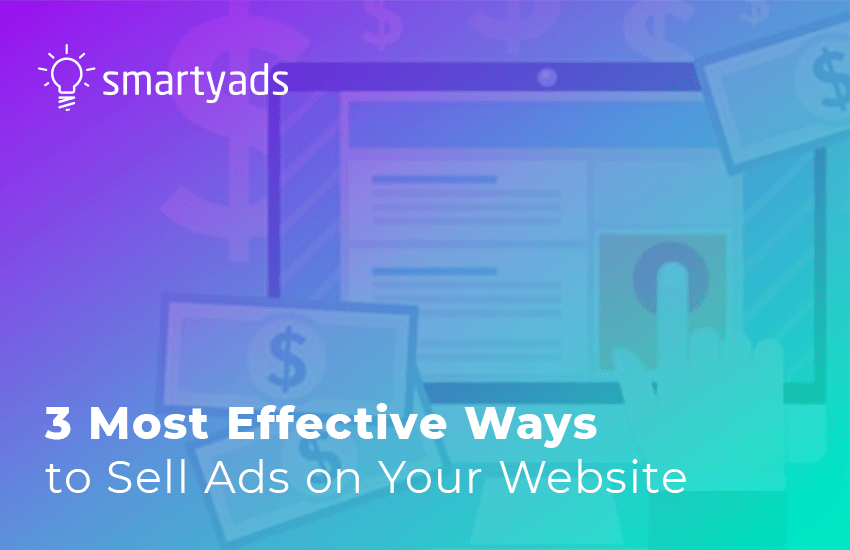


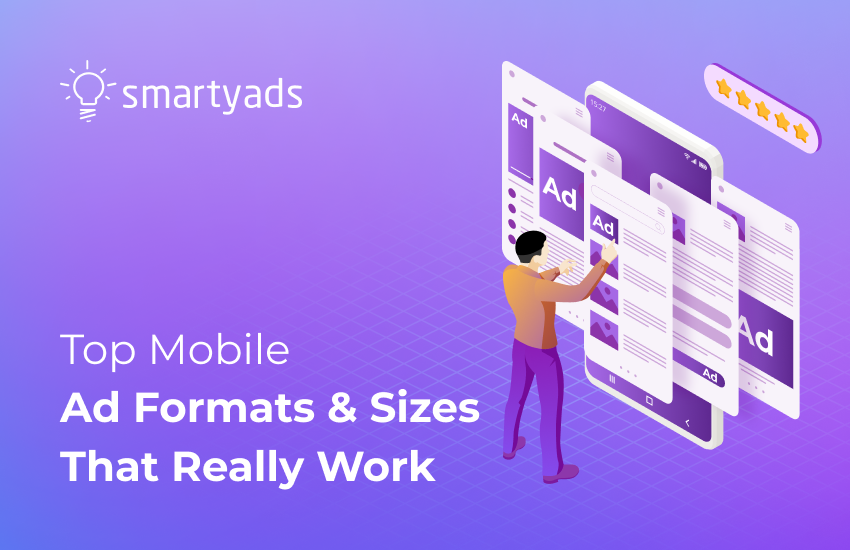
![In-App Advertising: the Complete Guide [Updated 2025]](/storage/uploads/2020/september/in-app-advertising-trends.png)